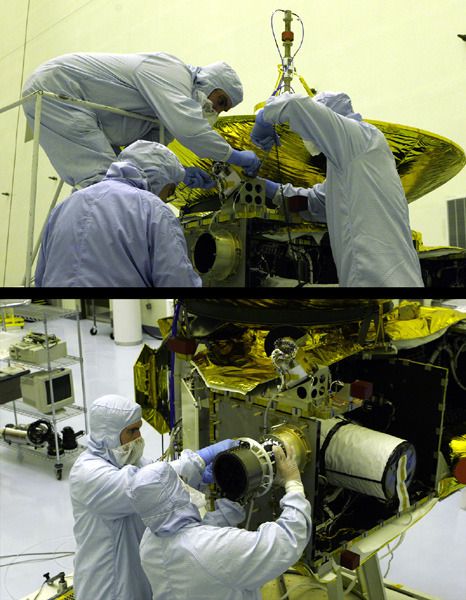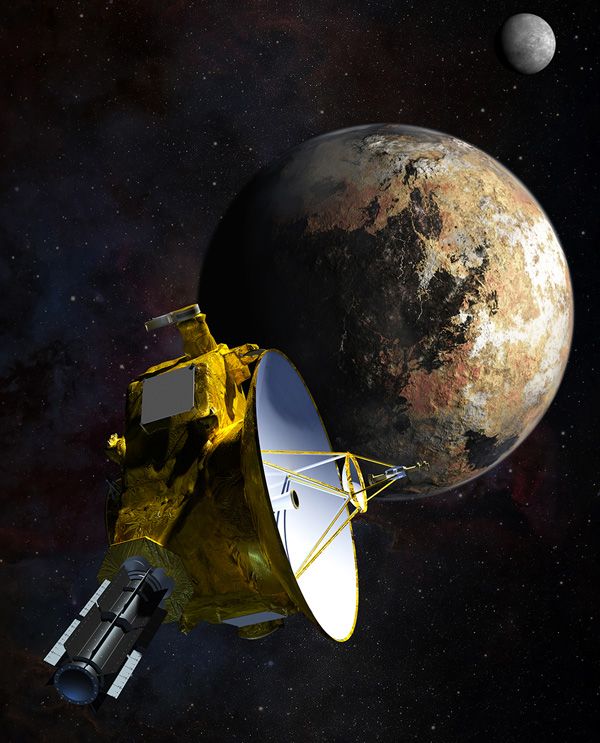
NASA / JHU APL / SwRI
New Horizons Sampling ‘Space Weather’ on Approach to Pluto (Press Release - March 27)
As NASA’s New Horizons spacecraft approaches the Pluto system, its space plasma (also called charged particle) instruments —SWAP and PEPSSI — have already been taking measurements and assessing the space weather environment in the Kuiper Belt near Pluto.
“Results from those measurements are being radioed to the ground and our team is already learning new things about the distant environment near Pluto’s orbit, 3 billion miles from Earth,” says New Horizons Principal Investigator Alan Stern, from Southwest Research Institute, Boulder, Colo.
The solar wind consists mainly of protons and electrons, but also has trace amounts of ions of helium and oxygen that New Horizons detects. Typical solar wind speeds at Pluto’s orbit distance range from 350-500 kilometers per second (about 750,000-1 million miles per hour); typical densities of the solar wind near Pluto’s orbit are about 6,000 particles per cubic meter – about a 1,000 times less than the solar wind at Earth. For comparison, the Earth’s atmosphere at its surface is one hundred billion-billion times denser.
“For some unknown reason, the Sun has been blowing less hard over the past decade and a half, and we are seeing the weakest solar wind of the space age,” says New Horizons co-investigator Dave McComas, also of SwRI, who leads the SWAP instrument team. “A weaker solar wind means that the size of the region where the solar wind interacts with the planet’s escaping atmosphere is expanded beyond our earlier predictions.”
Added New Horizons co-investigator Fran Bagenal, from University of Colorado, Boulder: “This means that New Horizons may cross the interaction boundary between the solar wind and Pluto’s atmosphere up to dozens of Pluto radii [and several hours] before its closest approach on July 14, creating a scientific bonanza for studies of the composition and escape rate of Pluto’s atmosphere!”
Source: New Horizons Website
****

NASA / JHU APL / SwRI / Steve Gribben

No comments:
Post a Comment